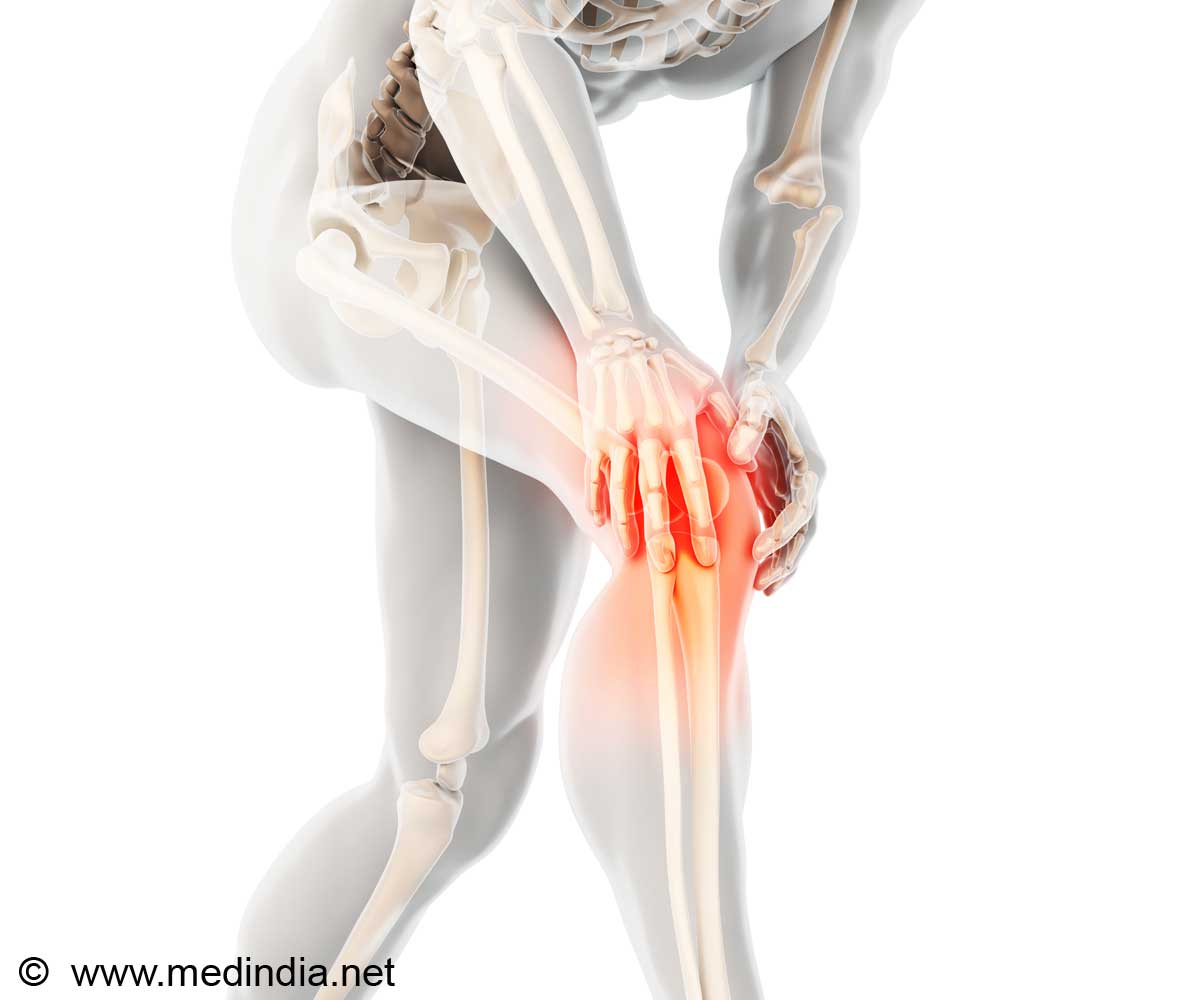Self-healing hydrogel enhances drug delivery for post-traumatic osteoarthritis, remaining intact under continuous joint stress and providing sustained drug release.

A mechanically resilient soft hydrogel improves drug delivery for treating post-traumatic osteoarthritis in physically active joints
Go to source). Post-traumatic osteoarthritis is a condition that impacts joints following an injury. Existing treatments aim to alleviate symptoms but do not halt or prevent the condition’s progression. While new therapies show potential in early studies, a key challenge remains effectively delivering these treatments to the joint, which is constantly subjected to mechanical stress.
‘Did You Know?
Post-traumatic osteoarthritis develops secondary to a joint injury, accounts for 12% of all osteoarthritis and is a major contributor to disability worldwide across all age groups. #medindia #osteoarthritis #disability’





Post-traumatic osteoarthritis develops secondary to a joint injury, accounts for 12% of all osteoarthritis and is a major contributor to disability worldwide across all age groups. #medindia #osteoarthritis #disability’
Role of Hydrogels in Prolonging Drug Release
“Disease-modifying drugs could slow, halt, or reverse PTOA, but rapid drug clearance from joints limits their effectiveness. Hydrogels can extend drug release, but can break down under mechanical stress, such as from exercise,” said lead and co-senior author Nitin Joshi, Ph.D., associate bioengineer in the Department of Anesthesiology, Peripoperative and Pain Medicine at Brigham and Women’s Hospital (BWH), a founding member of the Mass General Brigham healthcare system.“We recognized these limitations and designed a hydrogel that continuously releases medication without being affected by mechanical stress” said co-senior author Jeffrey Karp, Ph.D., distinguished chair of anesthesiology at BWH. Karp is also a professor of anesthesia at HMS.
Hydrogel’s Self-Repair Mechanism for Sustained Drug Release
For the study, which was funded by the National Institutes of Health, researchers used triglycerol monostearate (TG-18), a common food additive, to create a hydrogel that rapidly repairs itself after mechanical stress. In a mouse model, they found that the hydrogel was self-healing, meaning it liquefied under mechanical stress and then instantly reformed. This self-healing property ensured long-lasting, stable and sustained release of a disease-modifying drug—even during continuous joint movement—and significantly reduced cartilage damage. Interestingly, the hydrogel also improved joint lubrication.“Our hydrogel technology could transform the treatment of PTOA by reducing the need for frequent injections, slowing disease progression, and potentially delaying or preventing surgery,” said co-senior author Joerg Ermann, M.D., an attending rheumatologist in the Division of Rheumatology, Inflammation and Immunity at BWH and assistant professor of medicine at Harvard Medical School. “This is particularly important for athletes, military personnel, and young adults recovering from joint injuries who need effective therapies that allow them to maintain active lifestyles.”
Reference:
- A mechanically resilient soft hydrogel improves drug delivery for treating post-traumatic osteoarthritis in physically active joints - (https://www.pnas.org/doi/10.1073/pnas.2409729122)
Source-Eurekalert















